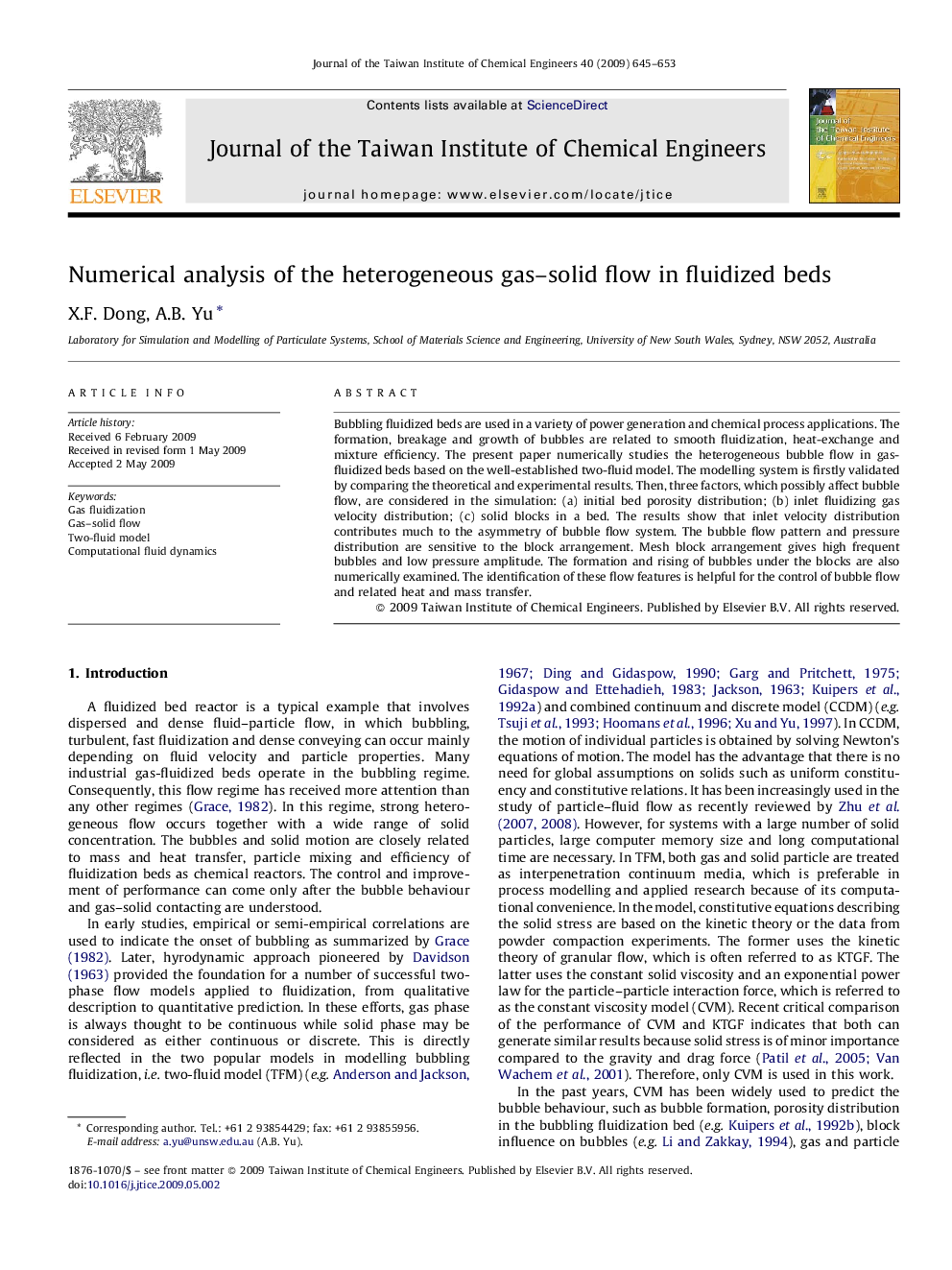| Article ID | Journal | Published Year | Pages | File Type |
|---|---|---|---|---|
| 691668 | Journal of the Taiwan Institute of Chemical Engineers | 2009 | 9 Pages |
Bubbling fluidized beds are used in a variety of power generation and chemical process applications. The formation, breakage and growth of bubbles are related to smooth fluidization, heat-exchange and mixture efficiency. The present paper numerically studies the heterogeneous bubble flow in gas-fluidized beds based on the well-established two-fluid model. The modelling system is firstly validated by comparing the theoretical and experimental results. Then, three factors, which possibly affect bubble flow, are considered in the simulation: (a) initial bed porosity distribution; (b) inlet fluidizing gas velocity distribution; (c) solid blocks in a bed. The results show that inlet velocity distribution contributes much to the asymmetry of bubble flow system. The bubble flow pattern and pressure distribution are sensitive to the block arrangement. Mesh block arrangement gives high frequent bubbles and low pressure amplitude. The formation and rising of bubbles under the blocks are also numerically examined. The identification of these flow features is helpful for the control of bubble flow and related heat and mass transfer.
